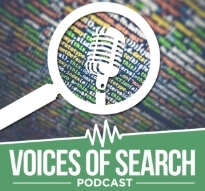How Google Detects AI content — Julia McCoy // Content at Scale
- Part 1Teaching AI to write in your tone — Julia McCoy // Content at Scale
- Part 2 How Google Detects AI content — Julia McCoy // Content at Scale
- Part 3Using Gen AI to write brand copy that ranks — Julia McCoy // Content at Scale
Show Notes
-
02:44The rise of AI detection tools"AI detection" is a brand-new concept that emerged alongside tools like ChatGPT. AI detectors evaluate text patterns for robotic tones and incentivize better writing as lazy writing is penalized along with robotic-sounding content.
-
05:12How AI detection is driving higher quality web contentThe rise of AI detection signifies a shift in the way Google is evaluating web content. Now part of Google page quality rater guidelines, AI detection filters out poor-quality, keyword-stuffed content that shouldn't have been ranking in the first place.
-
07:33Distinguishing AI detection from Google's previous approach to content qualityPreviously, we didnt have AI detection technology to determine how robotic text is. However, the emergence of ChatGPT brought with it AI detection, so if youre using ChatGPT with no human oversight, Google is unlikely to rank your content pieces.
-
08:50Googles penalization of AI watermarked contentEarlier this year, OpenAI allegedly proposed watermarking for Google to identify unedited ChatGPT content. Google announced that it won't rank OpenAI watermarked content as this is indicative of content published directly from ChatGPT without human editing.
-
10:27How to avoid getting flagged for AI generated contentParaphrasing AI-generated content and editing to remove predictable LLM phrasing can prevent flagging. Tools like Content at Scale offer paraphrasing features to improve and humanize AI-generated content, avoiding robotic-sounding phrases that might trigger detection.
-
12:08Avoiding plagiarism when using AI generated contentCopyscape, which is built into Content at Scales solution, can be used to determine if ChatGPT content is plagiarized. The key to getting content ranked on Google is ensuring its original, easy to read, sounds human-written, and AI undetectable.
Quotes
-
"The birth of ChatGPT gave us AI detection, creating a catch 22 where one led to the other, yet the latter now impedes the former." - Julia Mccoy
-
"AI detectors are driving the art of better writing as sloppy, lazy writing is also getting penalized along with 100% robotic sounding sentences." - Julia Mccoy
-
"Google has announced they'll be checking for watermarks and that it wont be ranking watermarked content as that indicates unedited, ChatGPT-published content." - Julia Mccoy
-
"LLM phrasing is so predictable that it's going to 100% be perceived as robotic, not rank at all, and could set your site back. Ensure you paraphrase anything that's coming out of AI to make it sound human." - Julia Mccoy
-
"Always think about, is this original? Does it read well? Does it sound like a human wrote it? Is it undetectable? Content has to pass all of those areas for it to rank in Google." - Julia Mccoy
- Part 1Teaching AI to write in your tone — Julia McCoy // Content at Scale
- Part 2 How Google Detects AI content — Julia McCoy // Content at Scale
- Part 3Using Gen AI to write brand copy that ranks — Julia McCoy // Content at Scale
Up Next:
-
Part 1Teaching AI to write in your tone — Julia McCoy // Content at Scale
Julia Mccoy, President of Content at Scale, delves into AI-driven copywriting. Technology has reached a level where it can mimic a human in the content creation process. Yet, generalized solutions like ChatGPT are unable to produce content in a specialized tone of voice which is crucial for producing content that embodies our brand’s voice and resonates with human beings. Today, Julia discusses how to teach AI to write in your tone.
Play Podcast -
Part 2How Google Detects AI content — Julia McCoy // Content at Scale
Julia Mccoy, President of Content at Scale, delves into AI-driven copywriting. ChatGPT's birth marked a significant milestone in AI technology, but it also introduced AI detection. Consequently, content created solely using ChatGPT, without any human input, likely won’t be ranked by Google and poses a risk of negatively impacting your website's standing. Today, Julia discusses how Google detects AI content.
-
Part 3Using Gen AI to write brand copy that ranks — Julia McCoy // Content at Scale
Julia Mccoy, President of Content at Scale, delves into AI-driven copywriting. Google’s search landscape has evolved to include AI, and the key to winning in SGE is topical authority. However, topical authority requires a substantial quantity of targeted content on a targeted domain, and forward-thinking SEOs are turning to generative AI as their tool of choice to efficiently build topical authority. Today, Julia discusses how to use generative AI to write brand copy that ranks.
Play Podcast









